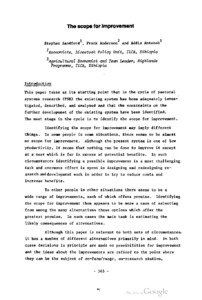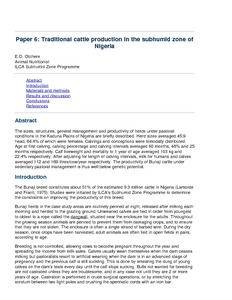The scope for improvement
Discusses the need for identifying sociological and economic possibilities for improvement in pastoral production systems, mentioning the major steps involved, particularly, identification of potential improvements, prediction of their likely impact on net production & quality of life; prediction of the probability of adoption; and assessment of the rapidity with which the improvements will bear fruit.








